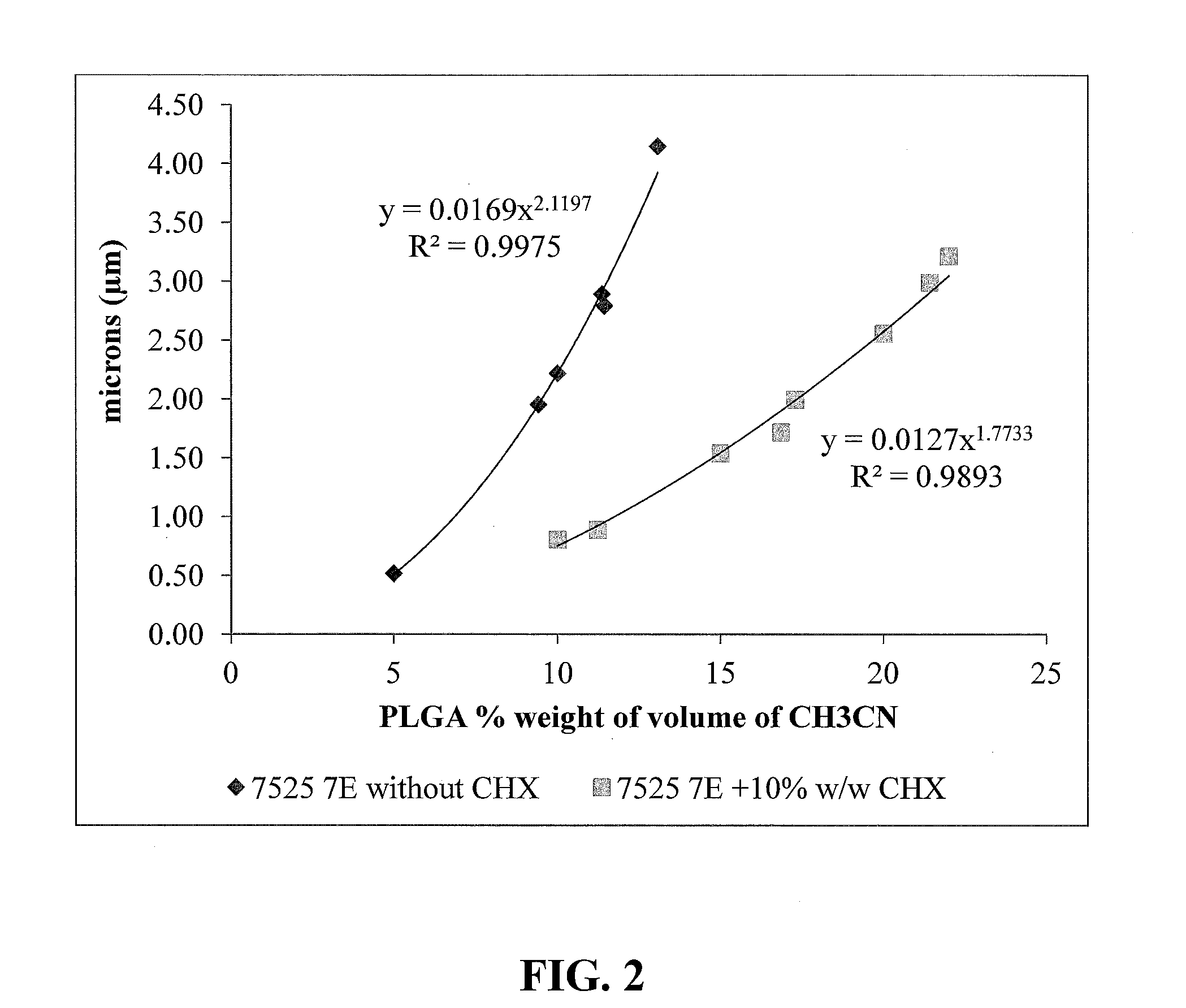Composition of and method for forming reduced viscosity polymeric coatings
a polymer coating and viscosity reduction technology, applied in the field of antimicrobial polymeric coatings, can solve the problems of significant risk of infection by implants, and achieve the effect of reducing the risk of infection
- Summary
- Abstract
- Description
- Claims
- Application Information
AI Technical Summary
Benefits of technology
Problems solved by technology
Method used
Image
Examples
example 1
PLGA Films
[0035]The following method was used to produce a coating solely composed of PLGA. Acetonitrile (CH3CN) (14.0 mL) was added to PLGA (7525 DLG 7E, 700 mg, 5% w / v) with stirring. The resultant mixture was stirred at about 40° C. until the PGLA substantially dissolved in the solvent. The solution was then allowed to cool to about 22° C. Articles were then coated by submersion into the coating solution followed by withdrawal from the solution at a controlled rate. After removal from the coating solution the casting solvent was allowed to evaporate from the articles under ambient conditions for between about 24 hours to about 48 hours.
example 2
PLGA and CHX Films
[0036]The following method was used to provide a coating composed of PLGA and CHX. PLGA was the polymer material (7525 DLG 7E, 2.1 g, 15% w / v) and the free base form of CHX (0.210 g, 10% w / w) were added to a stirring solution of CH3CN (14.0 mL). The resultant mixture was stirred at about 40° C. until all solids dissolved. The solution was then allowed to cool to about 22° C. Articles were then coated by submersion into the coating solution followed by withdrawal from the solution at a controlled rate. After removal from the coating solution the casting solvent was allowed to evaporate from the articles under ambient conditions for about 24 hours to about 48 hours.
Effects of CHX on Coating Thickness
[0037]To obtain a comparison of the effects of CHX on coating thickness, a series of coating solutions were prepared. The thicknesses of the coatings were determined by inclusion of crystal violet (a dye) within the coatings at a concentration of 0.5% weight to weight of ...
example 4
[0040]Example 4 illustrates the effect of chlorhexidine as a viscosity reducing agent. Two different solutions of PLGA 7525 DLG 7E in acetonitrile were prepared as shown in Table 4. The amount of chlorhexidine, which was used as a viscosity reducing agent, was the only variable between the two samples. The resulting kinematic viscosity was much lower for the solution containing the chlorhexidine (Solution 2) compared to the solution that did not contain any chlorhexidine.
TABLE 4Amt. Amt. KinematicPLGA (g)Amt. CHX (g)CH3CNViscosityFormulation(15% w / v)(0 or 10% w / w)(mL)(cSt)Solution 12.101426.6Solution 22.10.21142.94
PUM
| Property | Measurement | Unit |
|---|---|---|
| Fraction | aaaaa | aaaaa |
| Percent by mass | aaaaa | aaaaa |
| Fraction | aaaaa | aaaaa |
Abstract
Description
Claims
Application Information
 Login to View More
Login to View More - R&D
- Intellectual Property
- Life Sciences
- Materials
- Tech Scout
- Unparalleled Data Quality
- Higher Quality Content
- 60% Fewer Hallucinations
Browse by: Latest US Patents, China's latest patents, Technical Efficacy Thesaurus, Application Domain, Technology Topic, Popular Technical Reports.
© 2025 PatSnap. All rights reserved.Legal|Privacy policy|Modern Slavery Act Transparency Statement|Sitemap|About US| Contact US: help@patsnap.com


